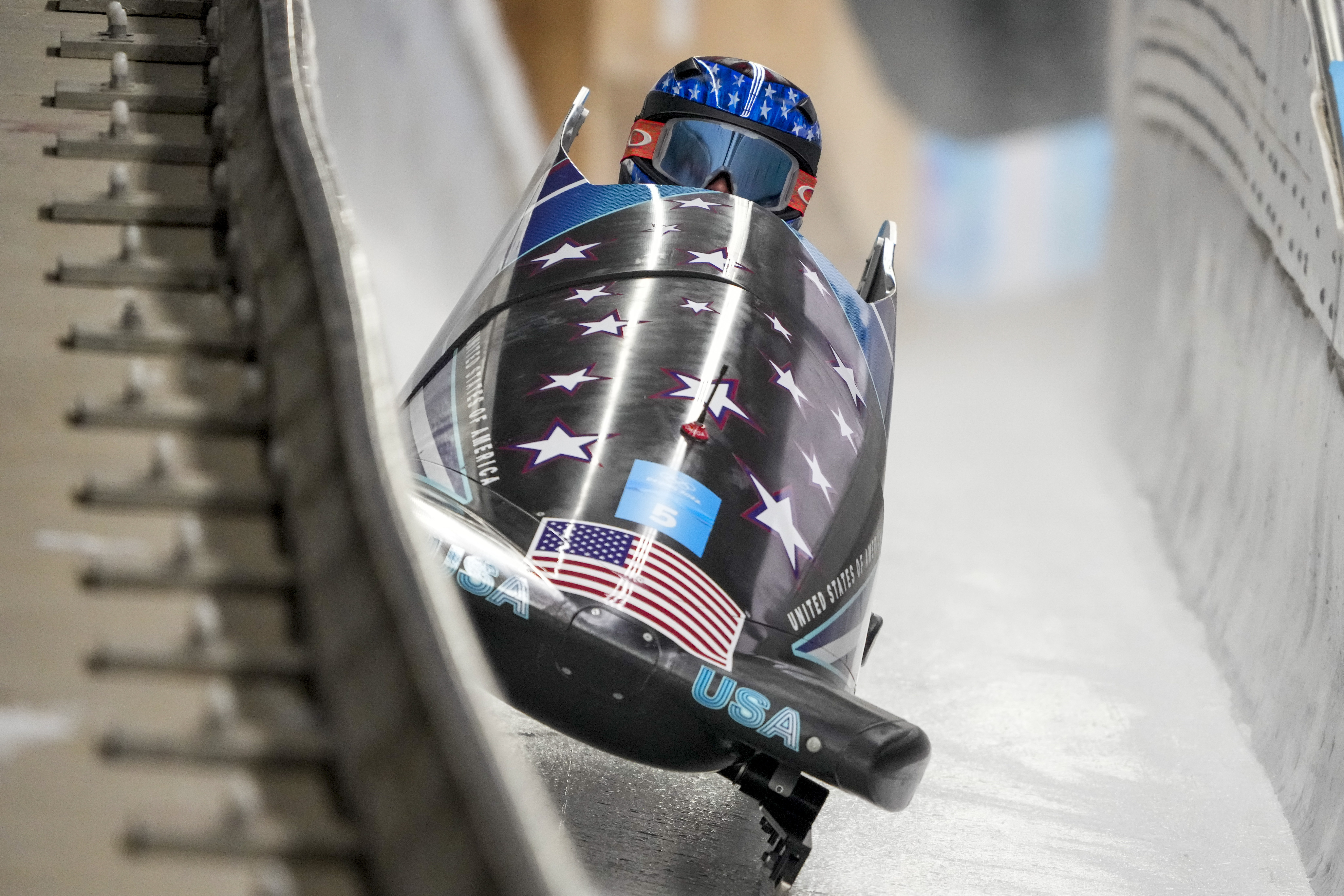Bobsled, skeleton and luge events will not be held in Italy during the 2026 Milan-Cortina Olympics, organizing committee officials said Monday, meaning those athletes will likely be competing in either Austria or Switzerland during the games.
The primary reason: money. A long-controversial plan to rebuild the historic Eugenio Monti track in Cortina d'Ampezzo — built 100 years ago, used for the 1956 Olympics and shut down 15 years ago — simply became too costly after it became clear the original budget of 50 million euros ($53 million) slotted by the Italian government wouldn't be close to enough.
The tracks in Igls, Austria, and St. Moritz, Switzerland — Igls is about 100 miles from Cortina, and St. Moritz about 200 miles from Cortina — are likely to be the only two seriously considered for the 2026 Games. Monday's decision was revealed at the International Olympic Committee’s annual meeting in Mumbai, India.
“As chairman of the IOC sustainability and legacy commission, I can only applaud the decision by our friends in Milano-Cortina not to go ahead with the reconstruction of the sliding center in Cortina,” said IOC member Prince Albert II of Monaco, who competed in five Olympics as a bobsledder. “And I am absolutely confident that the best solution will be found for an existing venue to be the venue for those games.”
We've got the news you need to know to start your day. Sign up for the First & 4Most morning newsletter — delivered to your inbox daily. Sign up here.
Moments after the announcement, IOC member Karl Stoss of Austria made clear that his country “would be more than happy” to be the sliding host in 2026.
“Thank you, Mr. Stoss, already on the campaign trail,” IOC president Thomas Bach said.
The IOC could decide the sliding venue for 2026 by the end of this year.
The IOC had long been skeptical about the Cortina sliding track project and urges Olympic hosts to avoid building venues which do not fulfil a proven need for local communities. Using venues outside a host country is now encouraged to limit costs for Olympic organizers who typically overspend budgets. The Cortina track plan also had been protested by some in Italy, who questioned how — or if — the track would be used after the 2026 Games.
And this could become a trend for sliding sports, given how there aren't many tracks in the world and how expensive it is to build a new one. Stockholm's bid to host the 2030 Winter Games in Sweden is expected to include a plan to have sliding events take place in Sigulda, Latvia. Salt Lake City, the only bidder for the 2034 Winter Games, has an existing track in nearby Park City that was used for the 2002 Games.
“Recent years’ dramatic international scenario has forced a reflection on the resources regionally allocated by the Italian government as investment for this specific venue,” Italy organizing committee leader Giovanni Malago said.
Igls and St. Moritz are venues that most of the world's sliders are familiar with, given how those tracks are regular stops on the World Cup circuits for those sports. But Monday's decision will lead to other questions, including how those athletes will be made to feel like they are part of an Olympics in Italy — without actually being in Italy.
There will also be logistical decisions to navigate, such as how sliders could take part in the opening and closing ceremonies in 2026 and if they'll have anything like an Olympic village to call their own.
“This venue has been at the center of a long and controversial process,” Malago said.
Milan-Cortina won hosting rights in 2019, beating a Swedish bid centered on Stockholm. Much like Sweden's 2030 bid, that plan also called for the use of the sliding track in Latvia.



